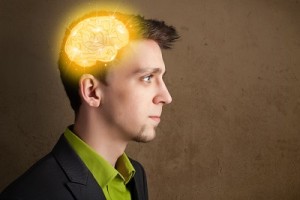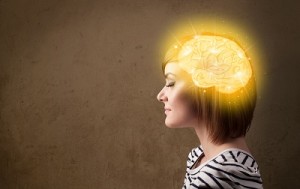- Calls to this hotline are currently being directed to Within Health or Eating Disorder Solutions
- Representatives are standing by 24/7 to help answer your questions
- All calls are confidential and HIPAA compliant
- There is no obligation or cost to call
- Eating Disorder Hope does not receive any commissions or fees dependent upon which provider you select
- Additional treatment providers are located on our directory or samhsa.gov
Guided Imagery for Eating Disorder Treatment

Contributor: Libby Lyons, MSW, LCSW, CEDS
Guided Imagery can be a powerful therapeutic process in the treatment of eating disorders. Those individuals with eating disorders have been described as avoiding any feelings of tension, pain, stress, or other uncomfortable emotions which can lead to a self-organization of extreme compliance and self-control, best exemplified by Winnicott’s term false self.
The false self is described as an outer self that provides an appearance of compliance and high levels of functioning, control, and self-esteem; this false self serves to protect the inner self from being revealed. This way of being in the world can result in feelings of deadness, numbness, and emptiness and a state characterized as being devoid of feeling and spontaneity (Epslen, M., Garfinkel, P.,1998).
A Sense of Calm
Guided Imagery work can provide an opportunity for clients to address affect dysregulation through modeling empathy, especially in the therapeutic relationship. The therapeutic relationship is a type of holding environment where healthy behaviors, self-soothing, and coping skills can be practiced and expressed. Guided Imagery can also enhance the relaxation response and provide a sense of calm within the client which can be immensely beneficial as the eating disordered client is often times experiencing chronic anxiety symptoms.

Guided Imagery is the language of the inner, healthy self. It can produce images and themes to prove and active approach to using imagination, and creativity within the client. Guided imagery can aid in triggering more positive memories, emotions, behaviors, and lessens the self-sabotaging behaviors or resistance in and outside therapy. Guided Imagery also increases client’s awareness of self and self-refection, self-identification, and identification of emotions.
The Elements of Guided Imagery
Guided Imagery has three common elements which are identification of the need to decrease arousal and promote comfort; the recommendation to incorporate audiocassette-taped exercises (made by the therapist or patient), scripts, reflective writing, for practice outside of therapy; and the identification of use of metaphors or symbols as a useful way to explore personal issues (particularly where difficulties with self-expression impede therapeutic progress). Guided imagery can enhance the therapeutic alliance by allowing for the client and therapist to have a safe environment to practice self-soothing and healthy behaviors.

The imagery treatment also demonstrated improvement on measures of attitudes concerning eating, dieting and body weight in comparison to the control group. In addition, the guided imagery demonstrated improvement on psychological measures of aloneness and the ability for self-comforting (Epslen, M., Garfinkel, P. 1998).
In another study published by the International Journal of Eating Disorders (2008), researchers from The University of North Carolina at Chapel Hill sought to determine whether relaxation therapy might help with eating disorder behaviors. The researchers compared the effectiveness of three relaxation strategies—progressive muscle relaxation, guided imagery and self-directed relaxation—to see whether any of them could reduce stress and anxiety levels associated with weight gain, feelings of fullness and thoughts about weight.

Then all patients in the Eating Disorders Program (whether subjects or not) participated in progressive muscle relaxation, guided imagery, self-directed relaxation or a control session that consisted of self-selected activity under observation on a rotating weekly schedule. Investigators found that the three active relaxation conditions significantly reduced anxiety and increased relaxation among the participants. What’s more, they enjoyed the activities and stated that they would recommend them to a friend (Shapiro, J., Pisetsky, E., Crenshaw, W. 2008).
Mindfulness Techniques
Expressive Therapists use mindfulness techniques to introduce clients to a mindful awareness of restorative breathing, gentle yoga, guided imagery, reflective writing and mindful movement. These techniques help to increase body awareness, a mind-body connection, and a way to build tolerance for difficult emotions and sensations.

These skills can be particularly beneficial for clients because eating disorders often interfere with the ability to identify emotions and with the body’s natural physiological cues regarding hunger and satiation. Mindful movement creates an opportunity for patients to welcome and attend to these physical and emotional needs, while strengthening their self-esteem and self-worth.
Community Discussion – Share your thoughts here!
What impact has guided imagery had on your recovery from disordered eating? What types of therapy did you use in conjunction with guided imagery?

References:
[1]: Esplen, Mary., Garfinkel, Paul., 1998. Guided Imagery Treatment ot Promote Self Soothing in Bulimia Nervosa: A Theoretical Rationale. Journal of Psychotherapy Practice and Research[2]: Shapiro, J., Pisetsky, E., Crenshaw, W., et al, 2008. Exploratory study to decrease postprandial anxiety: Just relax! International Journal of Eating Disorders.
The opinions and views of our guest contributors are shared to provide a broad perspective of eating disorders. These are not necessarily the views of Eating Disorder Hope, but an effort to offer discussion of various issues by different concerned individuals.
We at Eating Disorder Hope understand that eating disorders result from a combination of environmental and genetic factors. If you or a loved one are suffering from an eating disorder, please know that there is hope for you, and seek immediate professional help.
Last Updated & Reviewed By: Jacquelyn Ekern, MS, LPC on April 26, 2016
Published on EatingDisorderHope.com
